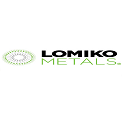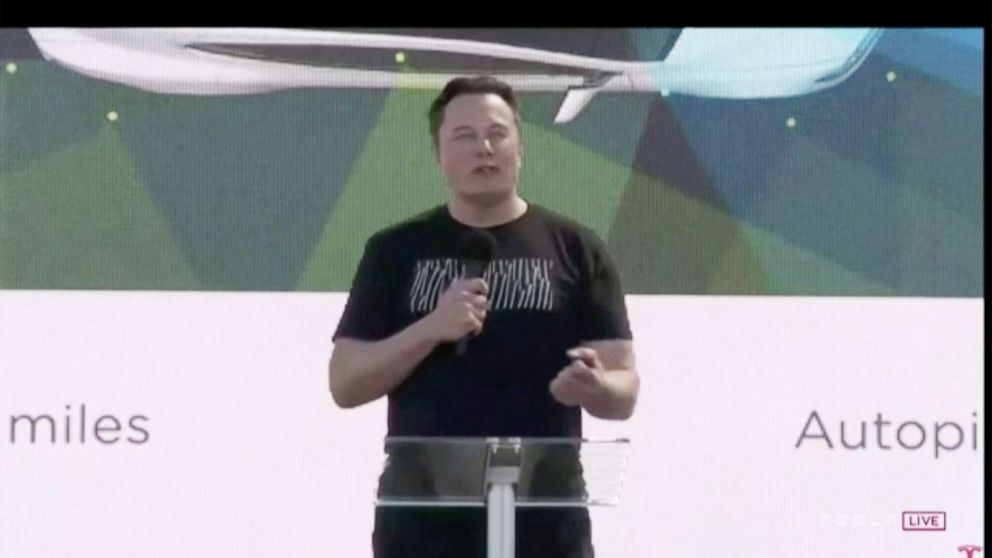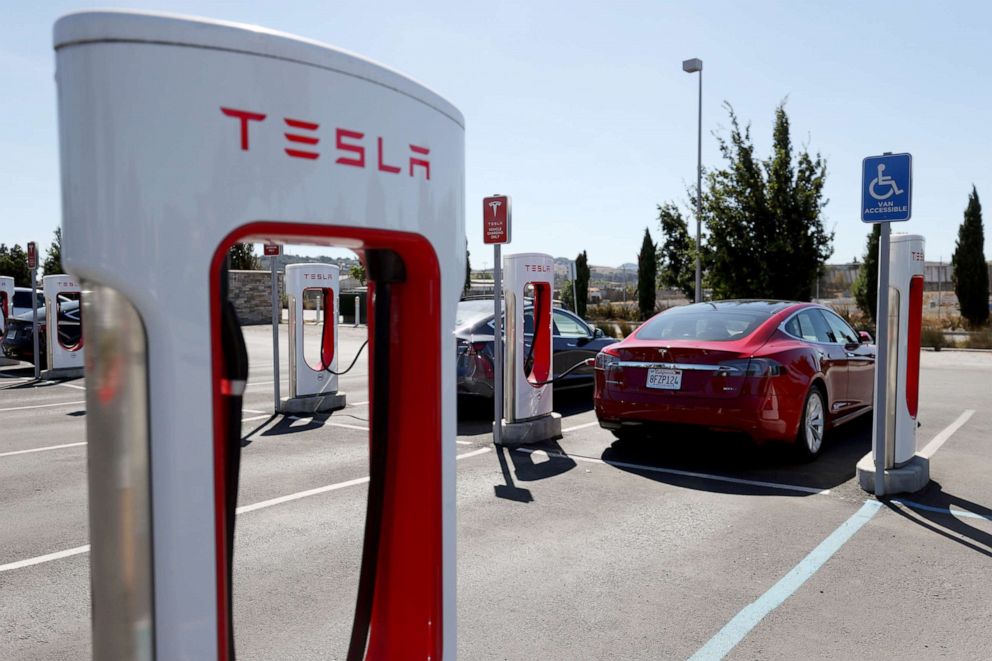SPONSOR: Lomiko Metals is focused on the exploration and development of minerals for the new green economy such as lithium and graphite. Lomiko has an option for 100% of the high-grade La Loutre graphite Property, Lac Des Iles Graphite Property and the 100% owned Quatre Milles Graphite Property. Lomiko is uniquely poised to supply the growing EV battery market. Click Here For More Information

- The company plans to offer a $25,000 vehicle in three years, officials say.
Tesla has announced new, internally-produced batteries for its electric cars, signaling a major shift from the automaker that, if successful, could significantly reduce the cost of electric vehicles.
“I think it’s the way all electric cars in the future will be made,” said CEO Elon Musk at Tesla’s “Battery Day” event outside its production facility in Freemont, California, on Tuesday.
Tesla’s new battery cell features a “tabless” design, which the company claims will provide five times the energy, six times the power, and 16% more range compared to its old battery cell.
The company’s current vehicles use batteries sourced from suppliers like Panasonic, where the energy stored in the battery pack is transferred to the car’s drivetrain via a conductive metal tab.
The new battery pack accomplishes the same thing by using a design that integrates a series of small bumps and spikes, which the company hopes will eliminate the need for a tab, and consequently drive down costs and production time. Musk tweeted the tech is “way more important than it sounds,” after the patent was approved back in May.

Courtesy of Tesla Elon Musk conducts Tesla’s “Battery Day” event outside its production facility in Freemont, Calif., S… Elon Musk conducts Tesla’s “Battery Day” event outside its production facility in Freemont, Calif., Sept. 22, 2020.
“This is not just a concept or a rendering; we are starting to ramp up manufacturing of these cells at our pilot ten gigawatt-hour production facility,” said Drew Baglino, Tesla’s Senior Vice President, Powertrain and Energy Engineering.
Tesla also said the new batteries would be 56% less expensive to manufacture and are being developed entirely in-house.
“They own the whole widget,” said Car and Driver Senior Editor of Technology Roberto Baldwin, “which is what gives them the ability to control every aspect, and to tweak as much efficiency as they can out of everything — out of their batteries, out of their motors, out of their inverters.”
Tesla’s investment in its own battery technology doesn’t mean it’s ramping down partnerships with other battery producers, Musk said. In a tweet prior to Tuesday’s event, the CEO said the company plans to “increase, not reduce battery cell purchases from Panasonic, LG & CATL (possibly other partners too.)” He also said the company is predicting shortages in battery cells from those suppliers and is ramping up in-house efforts to mitigate those shortfalls.
Musk said during the event that Tesla is planning to produce 100 gigawatt-hours of battery cells per year by 2022, and three terawatt-hours of cells per year by 2030.
“It allows us to make a lot more cars and a lot more stationary storage,” he said.
Bringing down the cost of battery production is part of Tesla’s plan to eventually sell 20 million vehicles annually — about fifty times more than they sell now, the company said.
“I think twenty million is doable,” said Car and Driver’s Baldwin. “As long as they can continue to grow, and continue to invest and sort of stay ahead of everyone.”

Justin Sullivan/Getty Images Tesla Superchargers charge vehicles in Petaluma, Calif. on Sept. 23, 2020. Tesla Superchargers charge vehicles in Petaluma, Calif. on Sept. 23, 2020.
Part of that 20 million vehicle goal will come from a Tesla model the company is planning to sell for $25,000, expected to be available in about three years. The car, which would undercut Tesla’s current Model 3 sedan as the brand’s cheapest vehicle, would be fully autonomous, Musk said.
“It was always our goal to try to make an affordable electric car,” said Musk.
Musk said that while production on the new batteries is underway, it will take between a year and 18 months to fully ramp up production, and even longer for the technology to show up in actual vehicles.
However, “Tesla has repeatedly set timetables and timelines, and then they’ve missed them,” said Baldwin.
The Model 3 faced significant delays as the company ramped up production in 2017. Since the start of the coronavirus pandemic earlier this year, Tesla has also pushed back planned releases for its “Semi” truck and “Roadster” sports car. But Baldwin says the company is making improvements, noting that the Model Y crossover was released ahead of schedule.
“On the one hand, they’re taking all the learnings they’ve gotten over the past ten, twelve years, and they’re using that to make their batteries better,” Baldwin said. “But there’s still the potential this could be delayed another year, another four years.”
Tesla’s battery announcement comes at a time of increased competition in the electric vehicle market. Earlier this month, Lucid, an EV startup founded by the former head of engineering for Tesla’s own Model S sedan, unveiled an electric sedan called the Air, with a claimed 503 miles of range. General Motors’ “Ultium” battery pack, which the company unveiled earlier this year, is set to underpin 13 new electric vehicle models across four brands, starting with a new “HUMMER” pickup truck.
Volkswagen also says it plans to produce 1.5 million EVs annually by 2025, and unveiled the ID4, an electric crossover SUV that’s expected to have 310 miles of range, on Wednesday.
SOURCE:https://abcnews.go.com/US/teslas-battery-technology-drive-cost-electric-cars-company/story?id=73222745
Tags: #Battery, #Carbon, #Demand, #Electric, #Evolution, #graphite, #Green, #High-Grade, #Imerys, #Material, #Material #Supply #Chain